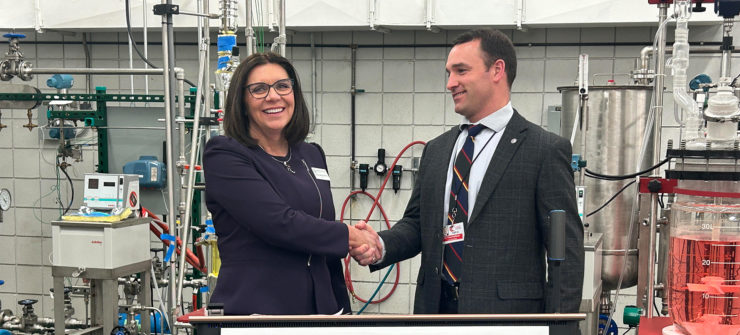MARIETTA, OH — With the passage of Senate Bill 135 by the Ohio Senate on Thursday, community colleges across the state are one step closer to addressing the state’s nursing shortage. Washington State College of Ohio (WSCO) was vocal in its support for this initiative and, in the early stages of the bill, provided evidence of its value and how the institution could help combat the nursing shortage that plagues not only Ohio, but the entire nation.
Community college baccalaureate programs aren’t unheard of in Ohio. In fact of the state’s 23 community colleges, seven have been approved to offer bachelor’s degree programs. The caveat being that the Chancellor of the Department of Higher Education is only permitted to authorize applied bachelor’s degrees. SB135, which was sponsored by Senator Jerry Cirino, R-Kirtland, expanded the authorization to remove the arbitrary term “applied.”
“Ohio’s community colleges are encouraged by legislative efforts in the state budget and Senate Bill 135 that will help address the state’s long-standing nursing shortage by allowing community colleges to offer bachelor’s degrees in nursing in needed areas of the state such as Marietta,” said Jack Hershey, president and CEO of the Ohio Association of Community Colleges. “The advancement of these proposals are thanks in part to the strong advocacy from higher education leaders and their local workforce partners such as Washington State President Dr. Vicky Wood and officials from the Memorial Health System. Senate Bill 135 takes several strong steps towards strengthening Ohio’s workforce system and we believe that this legislation is a tremendous win for students seeking a more affordable college education, as well as employers who consistently tell us that they are eager to hire all of the graduates that we can produce.”
Back in 2010 the Institute of Medicine released a report that called for 80 percent of nurses to have a bachelor’s degree by 2020. While colleges and universities across the nation scrambled to meet the goal, the benchmark fell short. In Ohio, only 57 percent of nurses have baccalaureate or higher level of nursing education. In rural communities like Southeast Ohio, the population of BSNs is significantly lower.
The shortfall is affecting the bottom line of local healthcare facilities. For instance, in the month of January alone, Memorial Health System (MHS) spent $3.1 million in traveling and international nurses in an attempt to offset their nursing gap. “Let me assure you no rural community can sustain these premium expense levels while addressing the impact of our greater safety net burden placed in rural communities,” confirmed Scott Cantley, MHS President and CEO. The result is higher spending on Medicaid and fewer dollars invested in the local economy when outside sources are sustaining the workforce, both of which impact local taxpayers.
In May, Washington State’s President, Dr. Vicky Wood testified to the Senate Workforce and Higher Education Committee and provided evidence that the current model of advancing the institution’s graduates from Associate Degree Nursing (ADN) to BSN simply isn’t working. In the past decade only 17-percent of Washington State’s ADN graduates have gone on to earn a BSN. When the college segmented its ADN population, adults age 25+, they found them disproportionally affected. Fewer than five-percent of ADN graduates pursue a BSN. Wood explained that these students simply aren’t in a position to move or make long commutes. “They do not pursue a BSN because they have family, children, and work responsibilities that keep them in this region.”
She went on to explain that from an equity perspective, the college’s data indicates that their graduates transferring to a university tend to be traditional-aged college students. “It’s to the detriment of our local economy,” she maintained. “Once they leave and engage in learning and clinicals in other communities, they often secure employment in those communities and they do not return.”
Memorial Health System has worked closely with the college to develop innovative delivery models and has been a strong supporter of the option to offer a BSN at the community college level. “Granting WSCO the approval to add the BSN program to their curriculum is going to create significant opportunities for their students and healthcare providers and begin to stabilize our community’s nursing shortage,” said Cantley.
Opponents to the bill expressed concerns about the quality of a bachelor’s degree from a community college, however, Wood countered the argument with the fact that WSCO’s registered nurse licensure rates, are better than most four-year Ohio institutions. WSCO’s NCLEX-RN scores are among the top 3-percent of all nursing schools in Ohio and they maintain a 97-percent pass rate. In fact, WSCO was ranked as the number one ADN program in Ohio according to RNCareers.org. Moreover, the program ranked 44 out of 1,046 schools from across the nation in the RN Careers’ annual report. Recognizing urgency to allow more affordable and accessible pathways for nurses to earn their bachelor’s degree, earlier this month, the Senate included authorizing language in the state budget bill. “We are grateful that Senate President Matt Huffman and the Ohio Senate included this amendment and hope the Budget Conference Committee and DeWine Administration will support this critical workforce provision, Wood shared. “We believe allowing WSCO and other community colleges to offer BSN programs will complement the state’s current nursing programs and will help our hospitals meet their workforce needs.”





